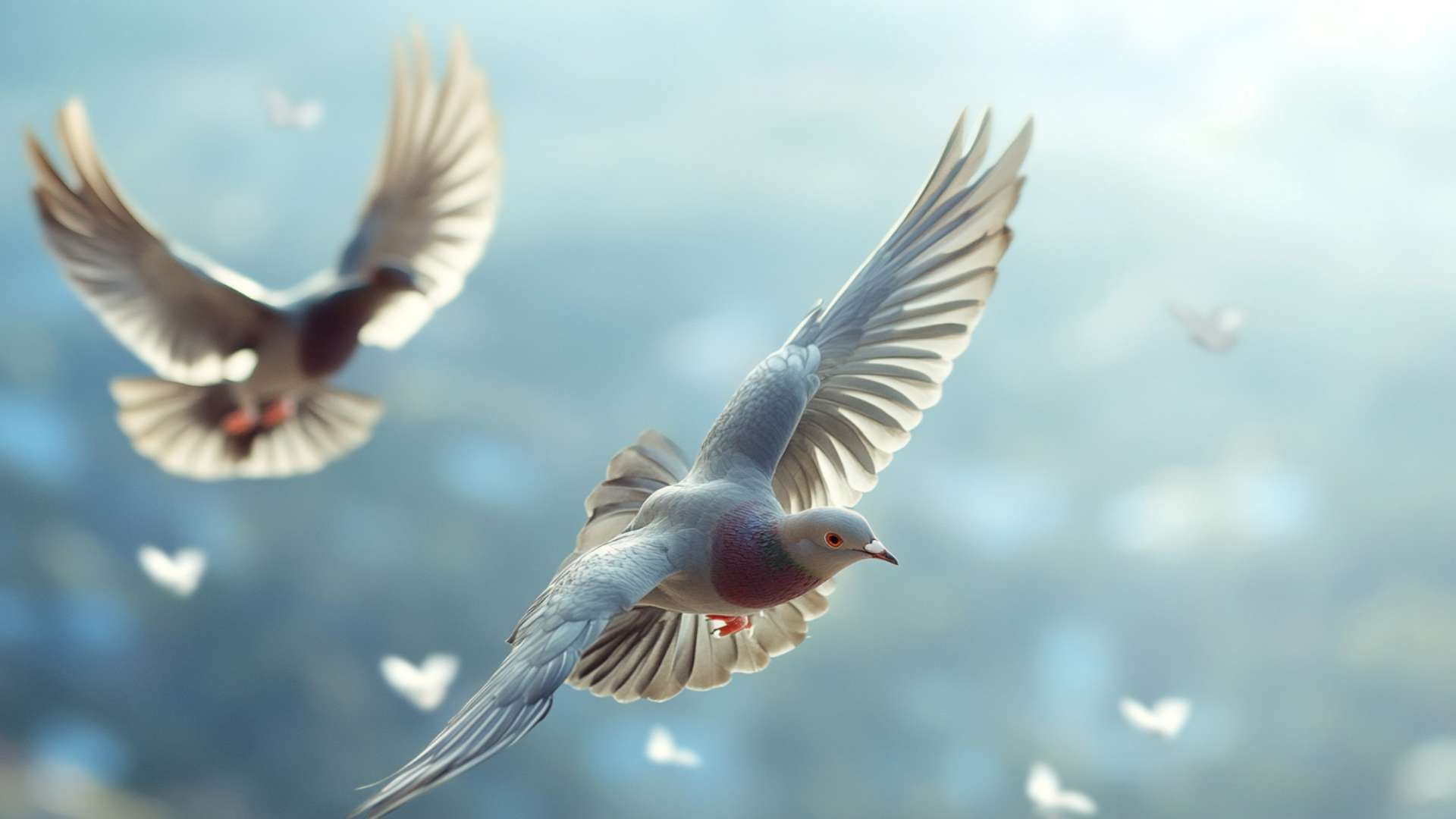Pigeons, those graceful birds found in cities and rural areas of the spiritual world alike, hold a rich history when it comes to symbolism. These wild birds have been revered in various cultures throughout time.
In ancient civilizations such as Egypt and Persia, pigeons were often regarded as divine messengers, carrying spiritual messages from the heavens above. They were even considered sacred creatures associated with gods and goddesses.
The importance of pigeons as symbols extended beyond ancient civilizations. In Christianity, for example, pigeons have been linked to the Holy Spirit—a representation of peace and purity.
The dove released by Noah from the ark also signifies hope and new beginnings. Similarly, in Islam, pigeons symbolize peace and purity of heart and are believed to bring blessings.
Explore Our Professional Pigeon Control and Extermination Services! Uncover the effectiveness of our expert pigeon control and extermination solutions in addressing your pigeon-related concerns. Click here to learn more about our specialized pigeon control and extermination services!
Importance of Understanding Symbolism in Nature and Animals
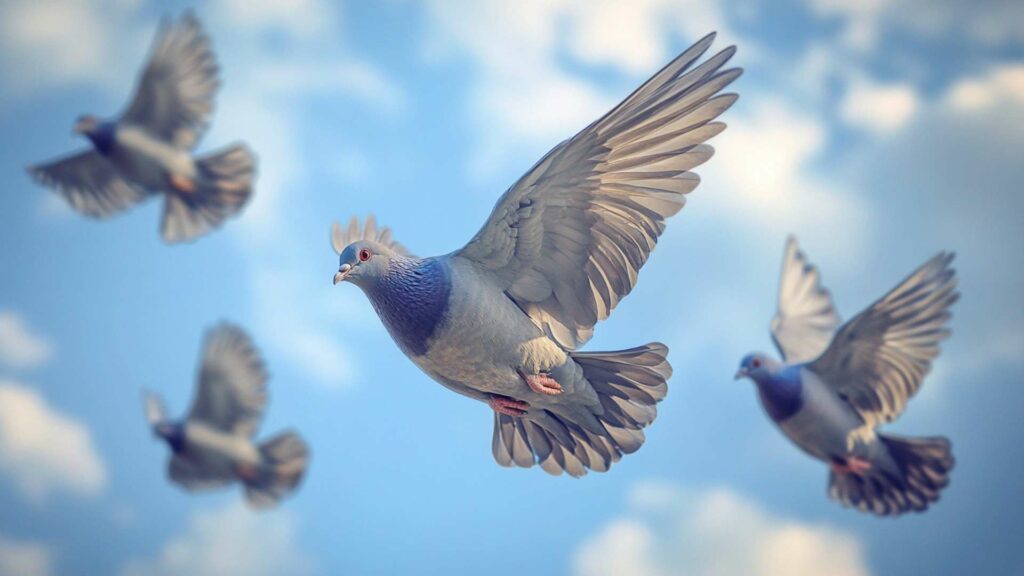
Symbolism in nature plays a crucial role in our understanding of the world around us. When we delve into the symbolic representation of animals first bird species like pigeons, we gain a deeper appreciation for their significance beyond their physical presence. By recognizing these hidden meanings, we can connect with nature on a more spiritual level.
Understanding animal symbolism helps us tap into the spiritual connection between humans and the natural world. It allows us to interpret signs from nature that may guide us on our spiritual path or provide insights during times of introspection or decision-making processes.
By observing certain behaviors or encounters with animals like seeing a pigeon repeatedly or finding a pigeon feather unexpectedly, one might experience moments of clarity or revelation—a spark igniting spiritual awakening or development within oneself. In many cultures across the globe—such as Native American culture—animals are seen as spiritual guides or companions on our journey through life.
The pigeon’s presence can be seen as an invitation to explore one’s own spiritual journey and seek spiritual enlightenment. Some may even choose to incorporate pigeon symbolism into their lives through various means, such as getting a pigeon tattoo or considering the pigeon as their spirit animal.
Understanding the symbolism behind pigeons allows us to recognize the beauty and significance of these birds beyond their monogamous nature or ability to build intricate pigeon nests. It invites us to open our minds and hearts to the messages they carry, whether in art, literature, mythology, or in our everyday interactions with these magnificent creatures.
Understanding Pigeon Behavior: What Does It Mean When a Pigeon Comes to You? Explore pigeon behavior and discover the significance of a pigeon approaching you. Pigeons often carry unique messages or meanings when they come near, making it an intriguing encounter.
The Symbolism of White Pigeons: What Does It Mean When You See a White Pigeon? Encounter a white pigeon and wonder about its significance. Find out what seeing a white pigeon might symbolize and the messages it could carry.
Cracking the Code: What Do Pigeon Eggs Look Like? Pigeon nests hold secrets, including their eggs. Explore the world of pigeon nests and learn to identify pigeon eggs. Understanding their appearance can provide insights into pigeon life cycles.
Inside the Avian Architecture: What Do Pigeon Nests Look Like? Pigeon nests are remarkable creations, built with care and precision. Delve into the fascinating world of pigeon nests, including their structure, materials, and the art of nest-building.
Exploring Pigeon Symbolism: What Do Pigeons Symbolize? Throughout history, pigeons have held symbolic meanings in various cultures. Uncover the symbolism behind pigeons and what they represent in different contexts.
A Gathering in the Sky: What Is a Flock of Pigeons Called? Witnessing a group of pigeons in flight is a breathtaking sight. But what is such a gathering called? Discover the term for a congregation of pigeons soaring through the skies and learn more about pigeon flocks.
Pigeon Fever in Horses: Understanding the Connection Pigeon fever, an equine ailment with an intriguing name, has a connection to pigeons. Explore the link between pigeons and pigeon fever in horses, gaining insights into its causes and implications.
Pigeon Symbolism in Different Cultures
Pigeons as Messengers in Ancient Civilizations
Pigeons have long been associated with the role of messengers, carrying important messages across vast distances. This symbolism can be traced back to ancient civilizations such as Ancient Egypt and Persia. In Ancient Egypt, pigeons were revered for their ability to deliver messages with speed and accuracy.
They were often depicted in hieroglyphics, symbolizing peace and communication between humans and the divine. Similarly, in Persia, pigeons played a crucial role as messengers.
They were used to relay messages between distant cities and acted as a reliable means of communication during times when other methods were not available. The sight of a pigeon flying towards its intended destination symbolized hope, unity, and the power of connection.
Symbolic Significance of Pigeons in Religious Traditions
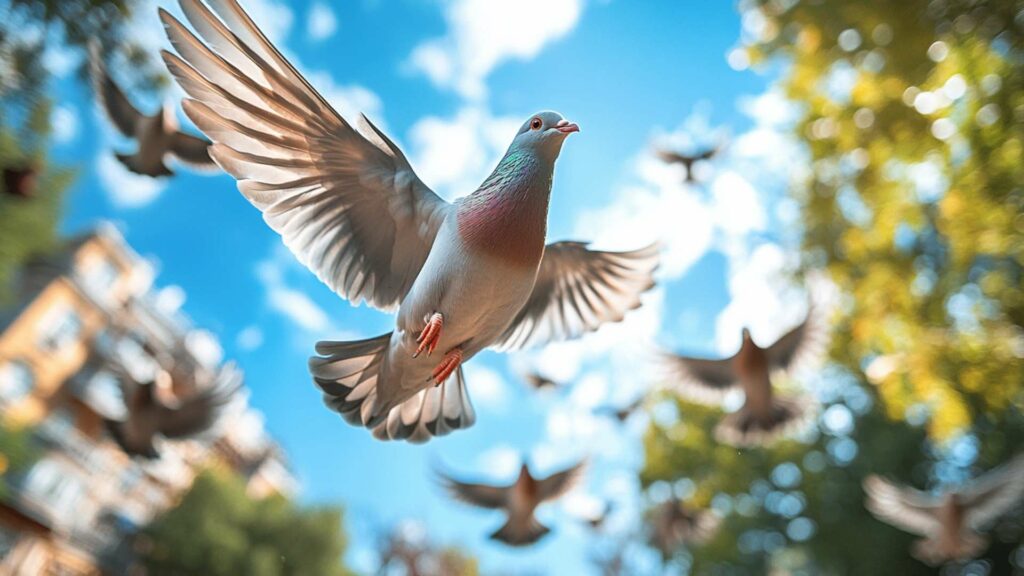
Pigeons hold symbolic importance in various religious traditions around the world. In Christianity, pigeons are seen as representations of the Holy Spirit and divine inspiration.
This association that pigeons represent something can be traced back to biblical stories where a dove descended upon Jesus during his baptism, signifying spiritual purity and guidance. In Islam, pigeons are considered sacred birds that possess spiritual significance.
Legend has it that when Prophet Muhammad sought refuge from his enemies in a cave, pigeons built nests at its entrance. These nests protected him from harm and allowed him to escape unharmed—an act believed by Muslims to be divinely ordained.
Pigeons as Symbols of Peace and Love in Modern Society
In modern society, pigeons continue to hold symbolic weight as emblems of peace and love. The image of two pigeons side by side is often used to represent harmony and unity among individuals or nations.
Their monogamous nature further reinforces their symbolism as creatures that value loyalty and commitment in relationships. Pigeons are frequently associated with peace due to their involvement in historical events such as World War I and II, where they were used to both carry messages and vital messages across enemy lines.
This association became particularly prominent when the white dove, a type of pigeon, came to symbolize peace during the peace movements of the 20th century. In our everyday lives, pigeons remind us to embrace the symbol of peace and love amidst chaos and conflict.
Their presence in urban environments serves as a gentle reminder that even in bustling cities, where stress runs high, it is possible to find moments of tranquility and compassion. The cooing of pigeons can help us momentarily escape from the demands of our fast-paced lives and connect with nature’s serenity.
Overall, pigeons possess a rich symbolism that transcends time and culture. Their ability to bridge gaps between worlds—be it physical distances or spiritual realms—makes them powerful symbols that continue to inspire and guide us today.
Pigeon Symbolism in Art and Literature
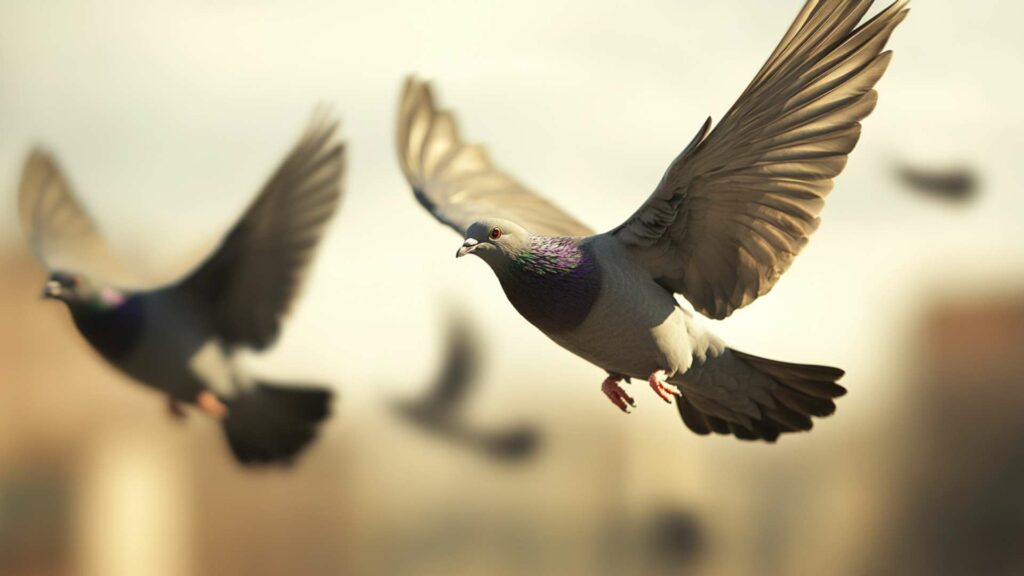
Depictions of Pigeons in Famous Paintings and Sculptures
There is something undeniably captivating about the way pigeons have captured the imagination of artists throughout history. Whether perched upon a windowsill or soaring through the sky, pigeons have been immortalized in numerous works of art.
One such iconic painting is Pablo Picasso’s “Two Pigeons,” which beautifully portrays two graceful pigeons side by side, their feathers delicately rendered with vibrant colors. The universal appeal of these birds can also be seen in classical sculptures like Jean-Baptiste Carpeaux’s “The Pigeon Attacked” where the artist captures the intensity and drama of a pigeon caught in an unfortunate encounter.
Pigeons as Symbols of Freedom, Resilience, or Urban Life in Literature

In literature, pigeons often serve as powerful symbols that evoke a sense of freedom and resilience. Take for example the classic novel “Jonathan Livingston Seagull” by Richard Bach. Although not specifically about pigeons, it tells the story of a seagull who rejects conformity to pursue his own path and achieve spiritual enlightenment.
Similarly, urban life is frequently depicted through the lens of brown pigeons as symbolism. In Charles Bukowski’s gritty poetry collection “Love Is a Dog From Hell,” he writes about city streets teeming with brown pigeons who witness both beauty and despair, symbolizing their resilience amidst concrete jungles.
Exploration of Pigeon-Related Metaphors or Idioms Used in Language
Language often embraces pigeon-related metaphors and idioms to convey deeper meanings beyond their literal interpretations. For instance, we commonly use phrases like “pigeonholed” to describe someone being confined to a narrow role or stereotype.
Additionally, idioms like “birdbrain” or “feathered friend” have become a part of everyday language, reflecting the symbolic representation of pigeons in our collective consciousness. These linguistic expressions demonstrate how pigeons have nestled themselves not only into our physical surroundings but also into the very fabric of human communication.
Symbolic Significance of Pigeon Feathers in Art and Literature
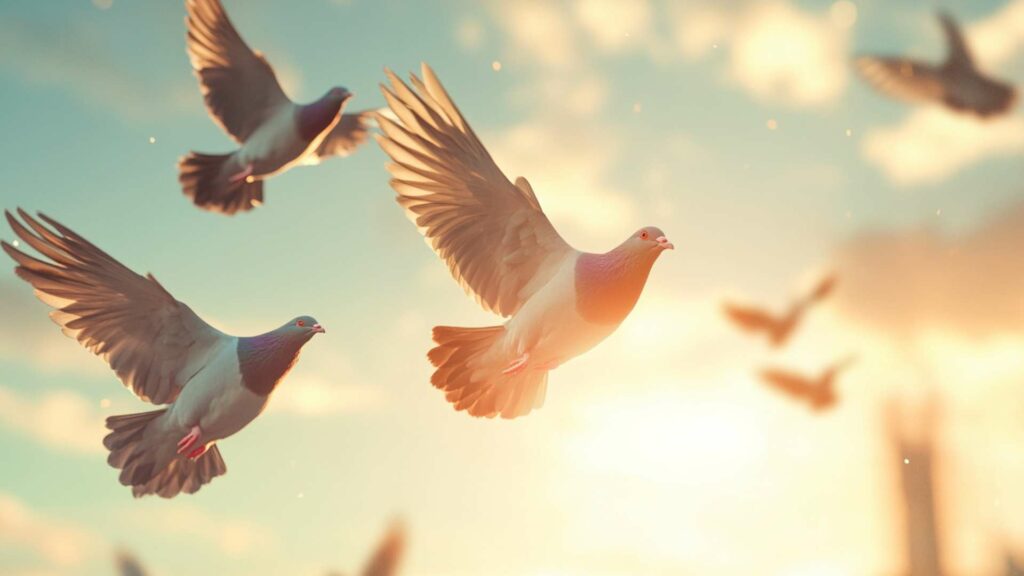
Pigeon feathers, with their soft hues and delicate patterns, are often imbued with symbolic significance in art and literature. In many cultures, finding a pigeon feather is considered a sign from the universe, representing divine inspiration or a spiritual awakening. Artists and writers have drawn inspiration from these feathers’ beauty and ethereal qualities.
For instance, poet Mary Oliver’s collection “Blue Horses” features an evocative poem called “The Pigeon Feather” that explores themes of transience and interconnectedness through the image of a single feather drifting on the wind. Pigeons hold a prominent place in art and literature as powerful symbols that resonate deeply within us.
Whether depicted in paintings or sculptures, they capture our attention with their elegance and grace. Through literature, pigeons symbolize freedom, resilience, and urban life—often serving as totem animals for those seeking spiritual enlightenment amidst challenging environments.
Their symbolism has even seeped into everyday language through metaphors and idioms that reflect their presence in our lives. Ultimately, pigeons continue to inspire artists and writers alike, reminding us of their enduring cultural significance as messengers of peace and unique embodiments of the human experience.
The Spiritual Significance of Pigeons
Connecting with the Spiritual Realm: Pigeons as Divine Messengers
Pigeons have long been associated with spirituality and divine communication across cultures. In many belief systems, pigeons are considered messengers from the universe or the spiritual realm. They are often seen as vehicles for delivering divine messages or from higher powers to humans.
The ancient Egyptians believed that pigeons carried the souls of deceased pharaohs to heaven, while in Persia, they were revered as symbols of angelic guidance. Even today, people who spot a pigeon flying overhead may interpret it as a sign that a message from the divine is on its way.
Interpreting Pigeon Behavior: Insights into Spiritual Messages
Paying attention to pigeon behavior and appearance can provide valuable insights into spiritual meanings. For example, if you come across a dead pigeon during your day, it is believed to be a significant sign or omen. Some interpret pigeon spiritual meaning in this occurrence as a reminder to let go of past burdens and embrace new beginnings or transformation in life.
On the other hand, witnessing a flock of pigeons soaring through the sky can symbolize unity and collective consciousness. Their synchronized flight patterns suggest harmony within oneself and with others.
Pigeon Guides in Shamanic Traditions: The Pigeon Spirit Animal
In shamanic traditions around the world, animals are seen as spirit guides that offer wisdom and protection on spiritual journeys. Pigeons serve as powerful spirit animals in many cultures due to their unique characteristics and rich symbolism.
Shamans often invoke the energy of the pigeon spirit animal when seeking clarity or guidance during rituals or healing ceremonies. The gentle nature and nurturing instincts of pigeons make them ideal companions for those seeking emotional healing or support.
Pigeon Symbolism in Native American Culture: Totem Animals and Divine Inspiration
Native American culture also holds deep reverence for the pigeon’s spiritual significance. In some tribes, pigeons are considered totem animals associated with introspection and spiritual growth. The calm and peaceful nature of pigeons inspires individuals to find inner peace and connect with their higher selves.
Additionally, pigeons are thought to bring divine inspiration to artists, writers, and musicians. Many Native American creation myths feature pigeons as essential characters, symbolizing the creative force that gives birth to new ideas and artistic expression.
Throughout history, pigeons have consistently demonstrated their capacity for delivering messages both in the physical realm and the spiritual domain. Whether you encounter a flying pigeon in the sky or come across its symbolic representation in art or tattoo designs, remember that these birds carry various symbolic meanings deeply rooted in our collective consciousness.
By paying attention to their presence and behavior, we can gain insight into our own spiritual journeys and connect with the divine forces that surround us. So next time a pigeon catches your eye or crosses your path, take a moment to reflect on its significance as a messenger bridging this world with the realm beyond.
Lesser-Known Facts about Pigeon Behavior and Characteristics

Insight into the Intelligence and Memory Capabilities of Pigeons
Pigeons, often underestimated in terms of intelligence, possess remarkable cognitive abilities. Researchers have found that these birds demonstrate exceptional memory skills, capable of remembering complex routes and locations over long distances. In fact, pigeons have been used throughout history as reliable messengers due to their uncanny ability to find their way back home.
This innate sense of direction is attributed to their impressive spatial memory, which allows them to create mental maps of their surroundings. They can even navigate in unfamiliar areas by relying on landmarks and geographical cues.
Furthermore, studies conducted on pigeon intelligence have revealed exceptional learning capabilities. These birds are quick learners and possess problem-solving skills that are comparable to those of primates.
They can be trained to perform various tasks through operant conditioning techniques, showcasing their adaptability and cognitive flexibility. Pigeons’ intellectual prowess challenges the notion that only mammals possess advanced cognitive abilities.
Unique Mating Rituals and Courtship Behaviors Observed Among Different Pigeon Species
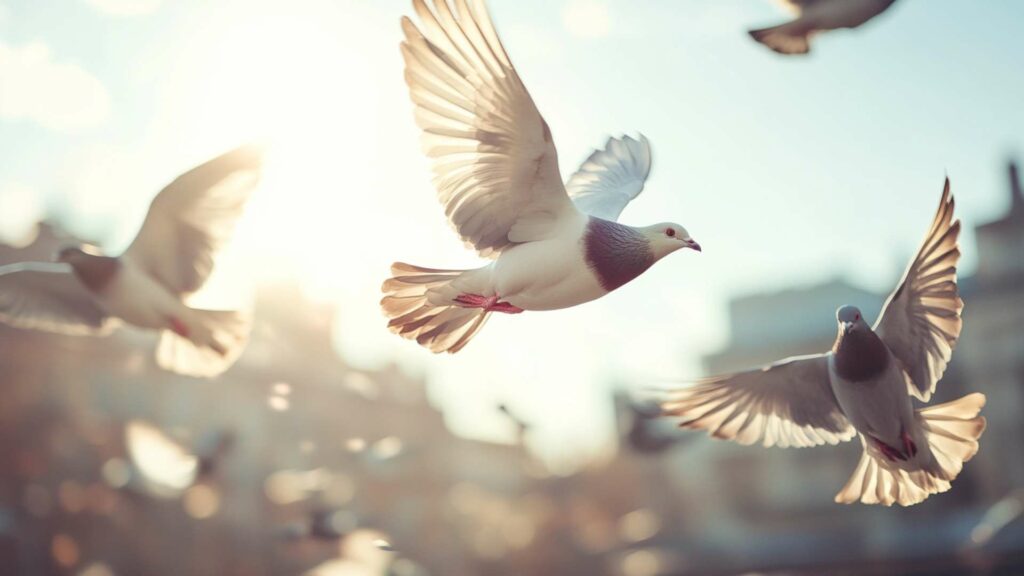
Pigeons, with their monogamous nature, engage in fascinating courtship rituals that vary across different bird species too. One captivating display is the “bowing” behavior exhibited during courtship by the male pigeon.
He gracefully lowers his head while puffing up his chest in an elegant gesture meant to attract a potential mate. Another intriguing aspect is the males’ elaborate vocalizations during courtship rituals.
These melodic coos serve as a means for males to communicate their availability and establish their territory to attract females. Furthermore, pigeons showcase a unique dance-like behavior known as “billing.” This mesmerizing routine involves both partners gently tapping each other’s beaks repeatedly—an intimate act symbolizing affection and bond strengthening.
Fascinating Abilities such as Homing Instincts, Navigation Skills, and Aerial Acrobatics
Pigeons have long been renowned for their exceptional homing instincts. They possess an innate ability to navigate vast distances, utilizing a combination of celestial cues, magnetic fields, and olfactory senses. By carefully analyzing the Earth’s magnetic field and incorporating visual landmarks into their mental maps, pigeons successfully find their way back home from unfamiliar locations.
In addition to their homing instincts, pigeons showcase remarkable navigation skills. They can accurately perceive and remember spatial relations in their environment—often memorizing complex urban landscapes with ease.
This navigating prowess allows them to effortlessly maneuver through cities while avoiding obstacles. Furthermore, when it comes to aerial acrobatics, pigeons are quite impressive.
They possess incredible agility and dexterity in flight—performing intricate maneuvers such as loops, dives, and sudden directional changes with grace. Their swift and precise flight patterns not only serve as a defense mechanism against predators but also contribute to the mesmerizing beauty that these birds bring to the skies.
Understanding these lesser-known facts about pigeon behavior not only deepens our appreciation for these magnificent creatures but also sheds light on their symbolic significance in our everyday lives. These remarkable aspects of pigeon flies highlight the true essence of pigeons as spirit animals or totem animals—a reminder of the infinite potential within ourselves for spiritual growth and enlightenment.
Mythology Surrounding Pigeons
Stories from Various Mythologies That Feature Pigeons as Central Characters
Pigeons have played significant roles in mythologies and folklore across diverse cultures. One such story about the black pigeon hails from Greek mythology, where the pigeon is associated with the goddess Aphrodite. According to the myth, a beautiful maiden named Leucothoe was transformed into a white pigeon by Aphrodite to escape the wrath of her jealous sister.
The white pigeon became a symbol of love and purity, representing the divine connection between mortals and gods. In Hindu mythology, there is a tale about Krishna, the pigeon represents an incarnation of Lord Vishnu.
It is said that Krishna had a special bond with pigeons and would often feed them. In one particular story, Krishna’s beloved companion Radha had lost her golden earring while playing near a river.
Distressed by this loss, Krishna called upon the pigeons for help. To their amazement, the pigeons retrieved the earring by diving into the depths of the river and returned it to Krishna.
Interpretation of These Myths to Understand Deeper Symbolic Meanings Associated with Pigeons
Through these myths, we can delve deeper into the symbolic meanings associated with pigeons. The first black and white pigeon in Greek mythology symbolizes purity, innocence, and spiritual awakening. It serves as a reminder that divine messengers can appear in unexpected forms to guide us towards higher truths.
The connection between Krishna and pigeons in Hindu mythology highlights compassion for all creatures and emphasizes our ability to form bonds with animals. This teaches us about unity and interconnectedness with nature—a representation of spiritual truth and our role as caretakers of this planet.
Overall, these myths illustrate that pigeons possess rich symbolism in various cultural narratives worldwide. They are not merely birds but hold profound significance as messengers bridging the spiritual and earthly realms.
Conclusion
Pigeons symbolize much more than their physical presence suggests. They carry with them a legacy of symbolism, mythology, and spiritual meaning that spans across time and cultures.
Whether it be in ancient tales of Greek gods or the folklore surrounding Hindu deities, pigeons have served as powerful symbols of purity, love, compassion, and divine connection. Next time you spot a pigeon flying by or encounter one on your daily journey, take a moment to appreciate the deeper meanings they represent.
Consider the grey pigeon that may bring a message of resilience and adaptability in times of change or the injured pigeon that reminds us to offer healing and compassion to those in need. So embrace the pigeons as more than just birds; they hold an essence that can awaken our souls to higher truths.
Let them be your power animal, your guardian angel, and your totem animal guiding you towards a greater understanding of life’s mysteries. In their gentle cooing and graceful flight, there lies a hidden wisdom waiting to be discovered—a reminder that even in the most ordinary moments, there is sacredness and divine beauty.
Frequently Asked Questions:
Pigeons can symbolize peace and love in spiritual contexts.
Pigeons’ luck symbolism varies; they can be seen as both good and bad luck.
In the Bible, pigeons often symbolize sacrifice, purity, and the Holy Spirit.
A bird’s visit can symbolize various things, from a message to a natural occurrence, depending on beliefs and context.

